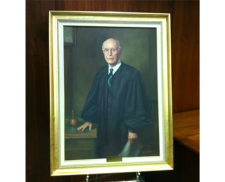Judge Muir's Portrait Dedicated
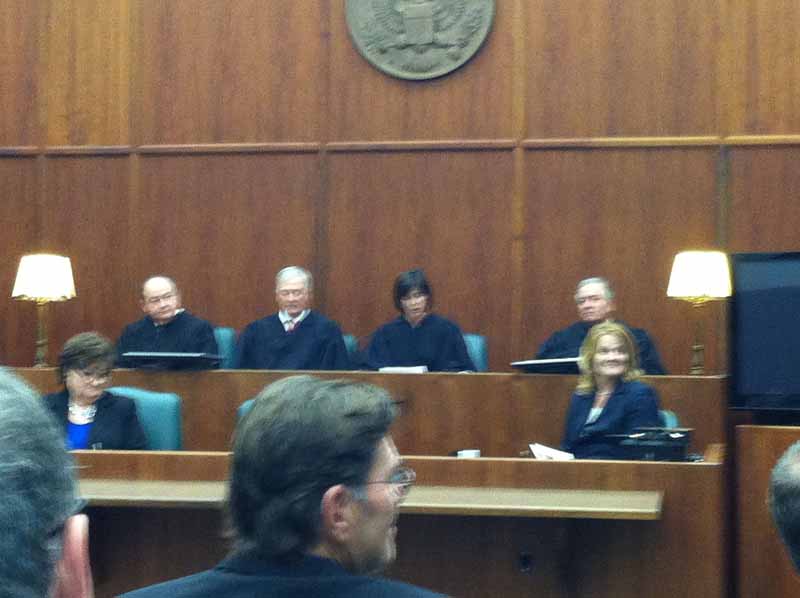 Portrait to hang in Judge's courtroom
Portrait to hang in Judge's courtroom
From the November 2, 2012 edition of the Williamsport Sun-Gazette:
An oil painting, a portrait, that captures the physical appearance, spirit and wisdom of the late U.S. Middle District Senior Judge Malcolm Muir, was unveiled here Friday in the federal courtroom where he once presided.
Those who knew him best shared memories of the judge and his uncanny abilities during the ceremony.
Muir died in the summer of 2011 at age 96, but he continued to work on Social Security appeals cases in his chambers until three days before his passing after suffering a stroke. Muir was the third oldest federal judge in the nation.
When Muir posed for a sketch for the portrait, the judge didn't want to appear "too kindly," recalled painter Jeffrey Martin, evoking a warm laughter in the courtroom filled with members of the judicial and legal community. The district encompasses 33 Pennsylvania counties, and numerous federal and county judges were in attendance.
They all looked on at Martin's painting which depicts Muir standing in a black robe, wearing a tie with the blue color and yellow stripe of his family's lineage. He has his right hand placed on his desk, with the other hand holding court documents. Half of a grandfather clock is in the background.
Beneath the portrait was a plaque, which is to be placed on the entrance to the room so that visitors and staff can remember Muir's legacy. U.S. Magistrate Judge William I. Arbuckle, his friend, read it: "A pioneer in efficient judicial administration, he strove to be fair and precise. He succeeded."
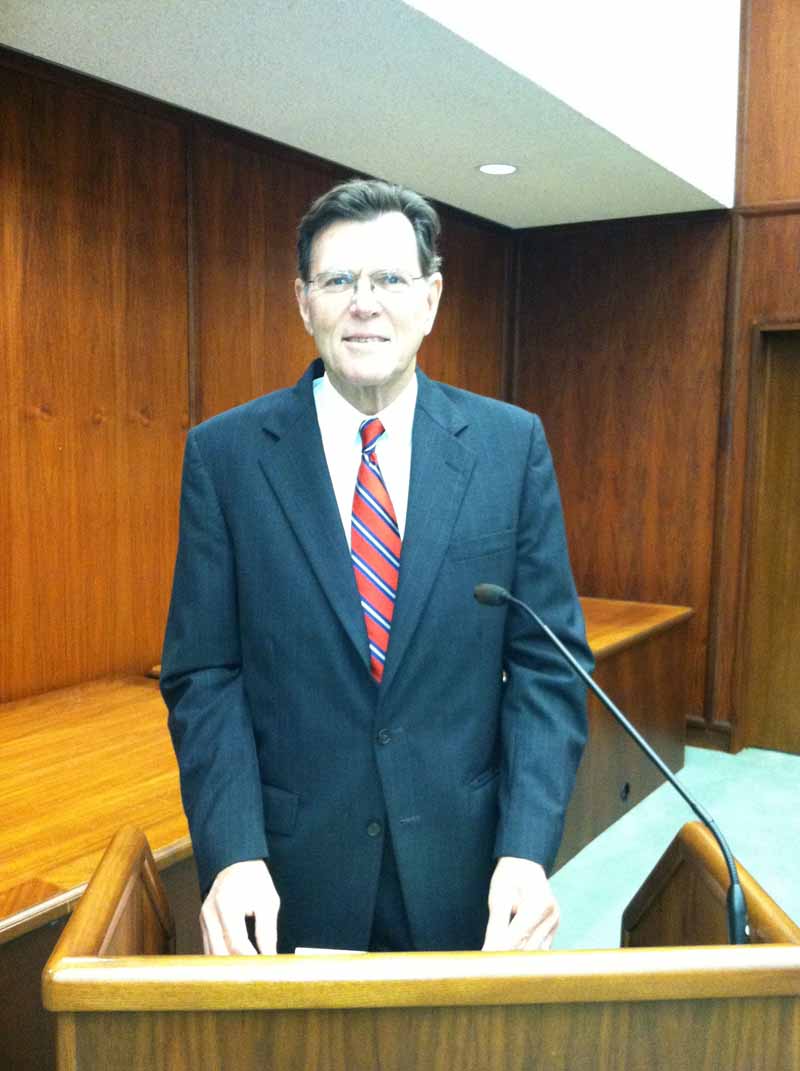
Chief Middle District Judge Yvette Kane said she had a feeling that not many who look at the portrait would see an unfamiliar face looking back at them.
"I am honored I had the opportunity to try to capture his likeness for posterity," Martin said.
One of the brightest moments of the ceremony was when Muir, speaking on a pre-recorded video, shared his conversation with an employee at the General Services Administration, a Washington, D.C., agency that oversaw construction of the federal courthouse on Third Street in the 1970s.
Muir, who had entered duty as a judge of the district court on Nov. 6, 1970, was trying cases in Lewisburg. City Hall at the time served as a federal building, but what was on Muir's mind was construction of the federal courthouse and ceiling height of the court room.
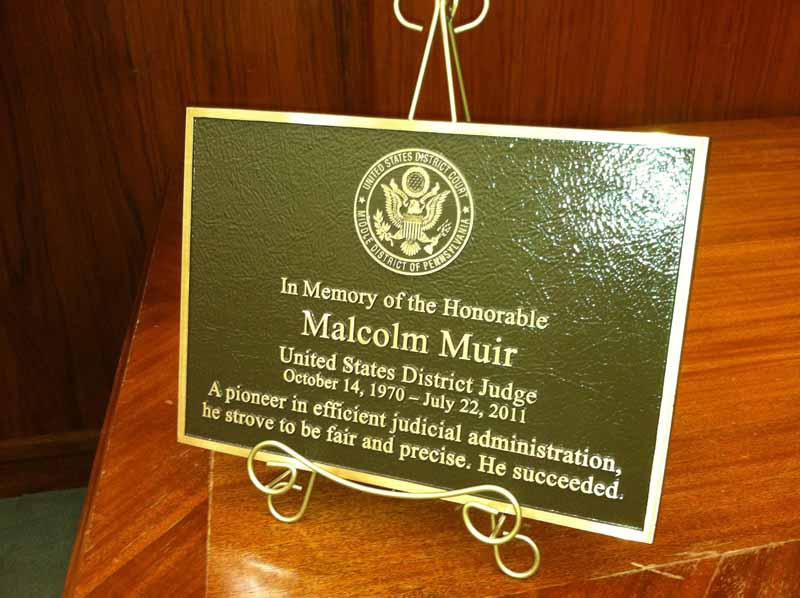
When a GSA employee replied that Muir would receive a set of the plans before the contract was put out to bid, Muir, with a wry delivery, told the Washington bureaucrat he could see the steel piers built up to the fourth floor.
After that first-hand visual update, Muir said the GSA employee told him he would be sent a copy of the plans that afternoon. Muir said he received them the following day.
But it wasn't the end of the matter.
After looking at the plans, the then 62-year-old judge said he determined the height of the ceiling to be 9 feet, 8 inches, and that was not acceptable, so he called the architect in Scranton, telling the architect what was planned to be built would resemble a "Sunday School room in a large church and it would be under the main auditorium."
The architect traveled to Lewisburg to meet Muir.
"Nine feet, 8 inches," he told the architect. "That's perfectly OK. I'm 62 years old and expect to be on the bench another 20 years. As long as I live I will never sit in that courtroom. As long as I live, this will be a monument to GSA's stupidity."
The architect decided to change it to Muir's specifications, raising the roof on the building. "I literally raised the roof," Muir would often tell jurors, according to court personnel.
Another in a series of humorous and touching memories recalling Muir was shared by Sharyn Eckman, his judicial assistant.
She spoke of Muir's intellect, and his ability to not only document, organize and detail every account in his life, but also to master new concepts, such as learning how to work a laptop computer at age 96.
"If I had half his marbles, I would be still twice as sharp as anyone I've every known," she said.
She said Muir would often tell "bawdy" jokes, but besides that, Muir had a humanity that went beyond his call of duty. His chambers were open to anyone with a personal problem, and the conversations were kept in confidence.
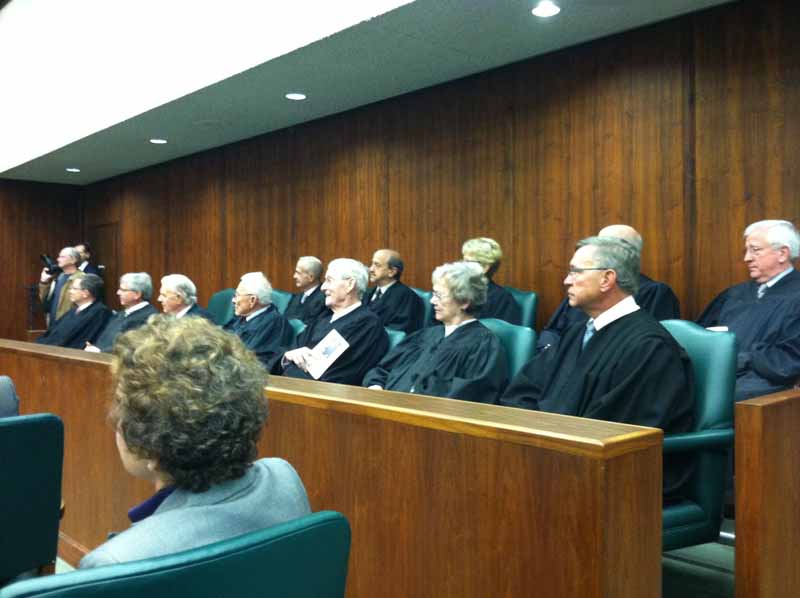 "He was my father figure, mentor, teacher, supervisor and my friend," Eckman said.
"He was my father figure, mentor, teacher, supervisor and my friend," Eckman said.
Retired attorney John "Jack" M. Humphrey told the Sun-Gazette he was preparing a documentary on Muir's life and accomplishments.
At the ceremony, Humphrey offered to hand out copies of a meticulous formula that Muir developed to calculate and determine the day of any year.
For example, the 40th anniversary of Muir becoming a U.S. Middle District judge falls on Tuesday's election.
Using the formula, Muir would know whether it was a Wednesday, or a Friday, or any other day, within 30 seconds.
Moreover, Humphrey said, Muir helped to modernize and improve a once broken federal court system.
Many of his reforms in the 1970s, when the caseloads were delayed, served as a model to courts throughout the federal judiciary.
Muir was behind enacting ways to speed up trials for criminal and civil matters.
Jury selection, for example, under Muir could be accomplished in a single day. Under Muir's leadership, many legal questions and disputes were resolved, Humphrey said, noting the jurist created summary jury trials, non-binding, but which often led to settlements in lieu of trial.
Overall, Muir was known to help make lawyers more prepared to try their cases, so trials were more efficient and effective and settlements fair for clients involved.
After the ceremony, in Muir's former chambers, Malcolm Muir Jr., his son, shared what the painting meant to him and his family.
The historian by profession said he believed in his heart that Martin's work carries a dimension that would speak volumes to those who view it in many ways for many years to come.
"Some portraits are flat. This is not," said the younger Muir. "I think it has captured his spirit."
Additional reading:

